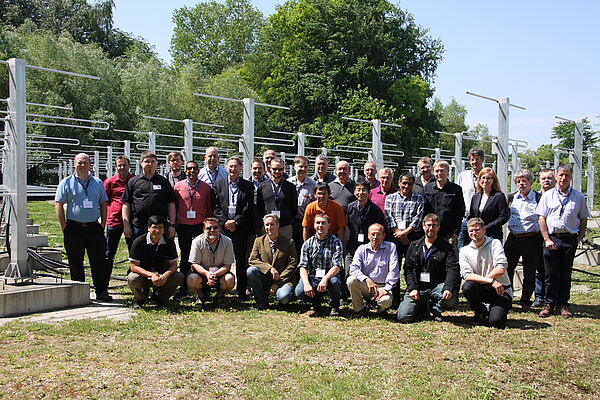Multistatic Meteor Radar Workshop
Imaging the wind with meteor radars – new technical developments and scientific questions
Kühlungsborn, 02 June 2016
Meteor radar has been a fundamental tool for probing the upper atmosphere and understanding the source of extraterrestrial materials entering the Earth system. Both all-sky and narrow beam monostatic radar systems have been used for such studies. Additionally all-sky systems are sometimes supplemented with additional receivers located within a few kilometers of the transmitter to calculate meteor trajectories. With recent advances in software defined receiver systems in addition to GPS disciplined oscillators, it is now possible to envision large regional mesoscale networks of multistatic meteor radar systems (in short: MMR) to conduct aeronomical and astronomical research.
A dedicated workshop was held from 31 May to 02 June at the Leibniz Institute of Atmospheric Physics in Kühlungsborn. Its purpose was to discuss the current state of the art in meteor radar technology and consider how this technology can be utilized for advancing the understanding of physics of the upper atmosphere. The 3-day workshop was attended by 34 leading researchers from Australia, Belgium, Canada, Germany, Japan, Peru, Sweden and the United States, providing an opportunity for dynamic interactions and discussions on emerging technologies and open scientific questions that can be addressed with these new systems. “The workshop revealed the current technical state and scientific demand for mesoscale radar networks.”, says Jorge Luis Chau, head of IAP radar department and co-organizer of the workshop. “There was a consensus that multistatic meteor radars can offer a high potential for new science and the continued technical and system deployment was highly encouraged. This development includes extending the German-Norwegian MMARIA system and collaborating internationally to develop similar networks in the United States and in Australia.”
The MMR workshop was co-organized by Scott Palo (University of Colorado, Boulder, USA) and sponsored by NSF. Further information at < https://www.iap-kborn.de/1/current-issues/workshops/multistatic-meteor-radar/ >.
Contact: Director Prof. Franz-Josef Lübken luebken@ iap-kborn.de
iap-kborn.de












